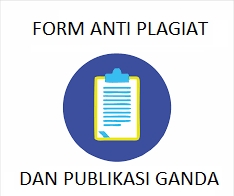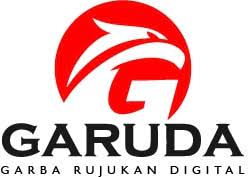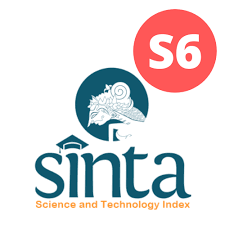Response of Soil and Peanut (Arachis hypogaea L.) on the Application of Several Local Microorganism and Manures
Abstract
- Introduction: This research was conducted to determine the effect of several types of local microorganism solutions and manures on the growth and yield of peanut and their impact on the physical properties of ultisols.
- Materials and Methods: The researches was conducted in Simalingkar B, Medan using Factorial Randomized Block Design within three replications. The first factor was types of microbe sources of local microbial solutions, include un-treated waste (M0), pineapple (M1), orange (M2), and tamarillo (M3) wastes. The second factor was manure types, inluce un-treated manure (P0), chicken (P1), cow (P2), and goat (P3) manures. The parameters were: soil physical characteristics (bulk density, water content and total of pore space), plant height, stem diameter, number of pods, and dry seeds yield.
- Results: The types of local microorganism solutions only affect to plant height of peanut, but has insignificant effect on the physical properties of ultisols, and stem diameter, the number of filled pods.plant-1, and the dry seeds yield.ha-1 of peanut. The types of manure had significantly effected on plant height and number of filled pods.plant-1, but had insignificant effect on stem diameter, dry seeds yield.ha-1 and the physical properties of ultisols. The interaction of MOL sources and manure did not significantly affect the growth and yield of peanut as well as the physical properties of ultisols. Orange MOL and chicken manure could be increase the plant height of peanut by 18.61% and 6.75%, respectively, compared to un-treated. Goat manure showed the highest number of pods.plant-1 by 6.32% compared to un-treated.
Downloads
References
Awodun, M. A., Omonijo, L. I., & Ojeniyi, S. O. (2007). Effect of goat dung and NPK fertilizer on soil and leaf nutrient content, growth and yield of pepper. International Journal of Soil Science, 2(2), 142-147. https://dx.doi.org/10.3923/ijss.2007.142.147.
Balai Penelitian Tanaman Kacang-Kacangan dan Umbi-Umbian. (2016). Teknologi produksi kacang tanah. Malang.
Burdman, S., Jurkevitch, E., Soria-Díaz, M. E., Serrano, A. M. G., & Okon, Y. (2000). Extracellular polysaccharide composition of Azospirillum brasilense and its relation with cell aggregation. FEMS Microbiology Letters, 189(2), 259-264. https://doi.org/10.1111/j.1574-6968.2000.tb09240.x.
Cibro, M. A. (2009). Respon beberapa varietas kacang tanah (Arachis hypogaea L.) terhadap pemakaian mikoriza pada berbagai cara pengolahan tanah. Tesis. Universitas Sumatera Utara. Medan.
Effi, I. M. (2009). Pupuk organik cair dan padat: pembuatan dan aplikasi. Penebar Swadaya. Jakarta.
Fitriyah, N. R. (2011). Studi pemanfaatan limbah cair tahu untuk pupuk cair tanaman (studi kasus pabrik tahu kenjeran). Skripsi. Institut Teknologi Sepuluh November. Surabaya.
Gultom, E. (2019). Pengaruh pupuk kandang ayam dan arang hayati terhadap pertumbuhan dan produksi tanaman kacang tanah (Arachis hypogaea L.). Skripsi. Universitas HKBP Nommensen. Medan.
Hanafiah, K. A. (2005). Dasar-dasar ilmu tanah. Edisi-1. PT Raja Grafindo Persada. Jakarta.
Hardjowigeno, S. (2003). Klasifikasi tanah dan pedogenesis. Akademika Pressindo. Jakarta
Hartatik, W., & Widowati, L. R. (2010). Pupuk kandang. Balai Penelitian Tanah, Jakarta.
Lumbanraja, P., & Harahap, E. M. (2015). Perbaikan kapasitas pegang air dan kapasitas tukar kation tanah berpasir dengan aplikasi pupuk kandang pada tanah ultisol Simalingkar. Jurnal Pertanian Tropik, 2(1), 74-88. https://doi.org/10.32734/jpt.v2i1.2881.
Malau, S. (2005). Perancangan percobaan. Universitas HKBP Nommensen. Medan.
Marjenah, M., Kustiawan, W., Nurhiftiani, I., Sembiring, K. H. M., & Ediyono, R. P. (2017). Pemanfaatan limbah kulit buah-buahan sebagai bahan baku pembuatan pupuk organik cair. ULIN: Jurnal Hutan Tropis, 1(2), 120-127. http://dx.doi.org/10.32522/ujht.v1i2.800.
Mayrowani, H. (2012). Pengembangan pertanian organik di Indonesia. Forum Penelitian Agro Ekonomi, 30(2), 91-108. http://dx.doi.org/10.21082/fae.v30n2.2012.91-108.
Miller, R. W., & Donahue R. L. (1990). Soils: an introduction to soils and plant growth. Sixth Edition. Englewood Cliffs: Prentice-Hall International, Inc. 768 p
Pitojo, S. (2005). Benih kacang tanah. Yogyakarta : Kanisius.
Purwasasmita, M., & Kunia K. (2009). Mikroorganisme lokal sebagai pemicu siklus kehidupan dalam bio reaktor tanaman. Seminar Nasional Teknik Kimia Indonesia- SNTKI 2009. Bandung, 19 – 20 Oktober 2009.
Rahayu, L. R. (2017). Pengaruh Pupuk Organik Cair (POC) dari MOL pepaya terhadap pertumbuhan dan produktivitas tanaman cabe rawit (Capsicum frutescens L.). Skripsi. Universitas Nusantara PGRI Kediri. Kediri.
Rivai, R. S., & Anugrah, I. S. (2011). Konsep dan implementasi pembangunan pertanian berkelanjutan di Indonesia. Forum Penelitian Agro Ekonomi, 29(1), 13-25. http://dx.doi.org/10.21082/fae.v29n1.2011.13-25.
Santi, L. P., Dariah, A., & Goenadi, D. H. (2008). Peningkatan kemantapan agregat tanah mineral oleh bakteri penghasil eksopolisakarida. E-Journal Menara Perkebunan, 76(2), 93-103. http://dx.doi.org/10.22302/iribb.jur.mp.v76i2.85.
Sembiring, Y. R. V., Nugroho, P. A., & Istianto, I. (2013). Kajian penggunaan mikroorganisme tanah untuk meningkatkan efisiensi pemupukan pada tanaman karet. E-Journal Warta Perkaretan, 32(1), 7-15. https://doi.org/10.22302/ppk.wp.v32i1.31.
Sudaryanto, T., Inounu, I., Las, I., Karmawati, E., Bahri, S., Husin, B. A., & Rusastra, I. W. (2018). Forum komunikasi profesor riset: mewujudkan pertanian berkelanjutan: agenda inovasi teknologi dan kebijakan. IAARD Press, Jakarta.
Wahyudi, E., Zulkifli, T. B. H., Tampubolon, K., Razali., & Panggabean, M. H. (2020). Characteristics of growth and yield for wax apple (Syzygium samarangense) in the application of goat manure and nasa liquid organic fertilizer. AGRINULA: Jurnal Agroteknologi dan Perkebunan, 3(2), 49-64. https://doi.org/10.36490/agri.v3i2.99.
Widiyaningrum, P., & Lisdiana. (2015). Efektivitas proses pengomposan sampah daun dengan tiga sumber aktivator berbeda. Rekayasa: Jurnal Penerapan Teknologi dan Pembelajaran, 13(2), 107-113. https://doi.org/10.15294/rekayasa.v13i2.5604.
Zulkifli, T. B. H., Tampubolon, K., Nadhira, A., Berliana, Y., Wahyudi, E., Razali., & Musril. (2020). Analisis pertumbuhan, asimilasi bersih dan produksi terung (Solanum melongena L.): dosis pupuk kandang kambing dan pupuk NPK. Jurnal Agrotek Tropika, 8(2), 295-310. http://dx.doi.org/10.23960/jat.v8i2.3784.
Copyright (c) 2021 Agrinula : Jurnal Agroteknologi dan Perkebunan

This work is licensed under a Creative Commons Attribution-NonCommercial 4.0 International License.





